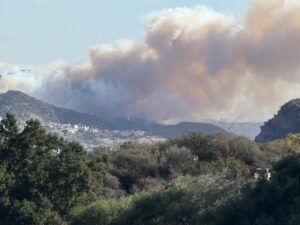Examining the Health Implications of Emissions When Lithium‑Ion Batteries Fail Catastrophically
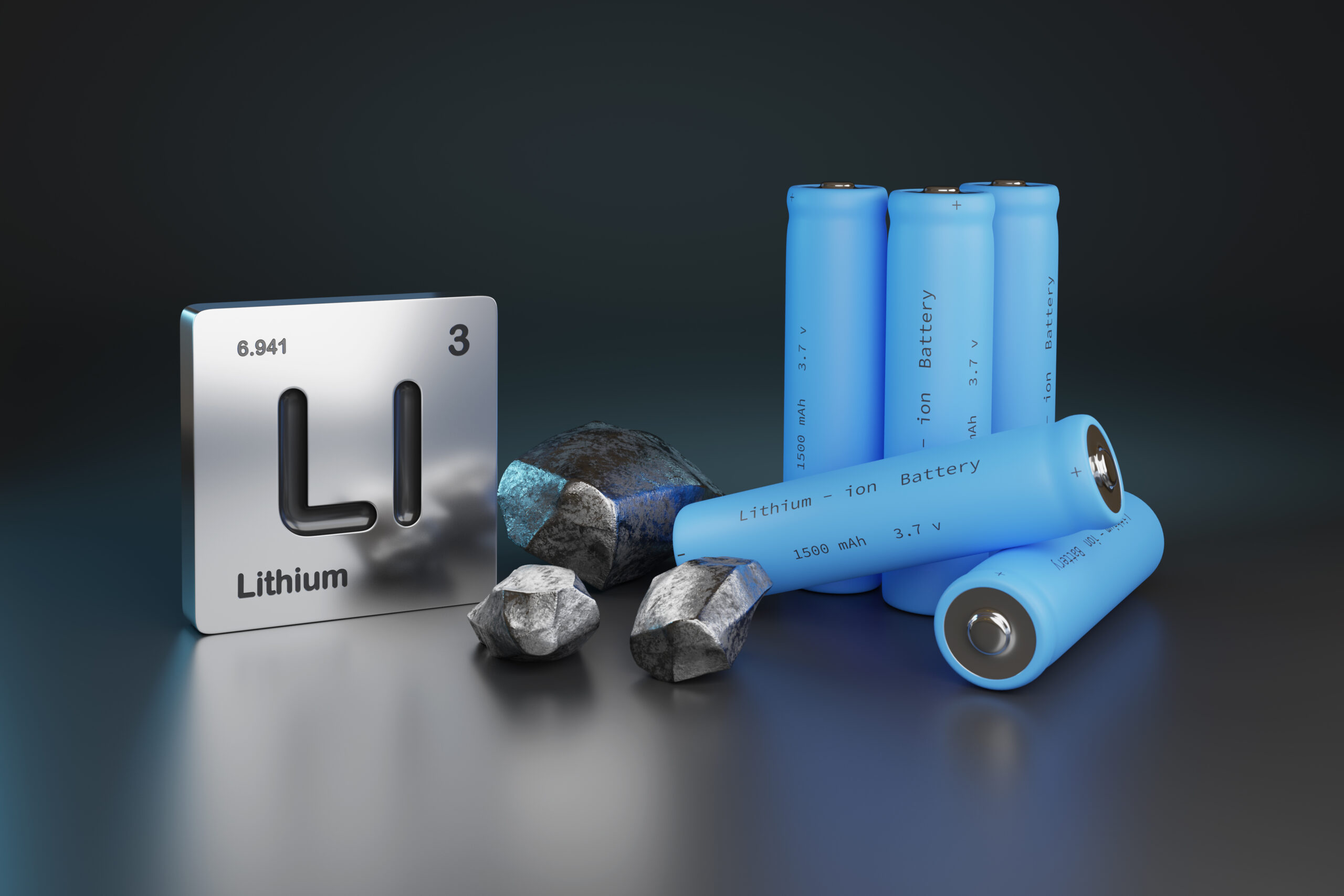
As the use of lithium-ion batteries rises — for consumer electronics, electric vehicles, and energy storage, among other applications — so does the need to better understand and analyze the gases and particulates those batteries emit when they fail catastrophically and enter an uncontrollable, self-heating state known as thermal runaway.
Long an energy technologies safety science leader, the Electrochemical Safety Research Institute (ESRI) is collaborating with Texas-based Southwest Research Institute (SWRI) to examine the particulate emissions to create awareness for first responders on physical and chemical hazards and inform regulatory strategies.
“Lithium-ion batteries are generally safe, offering high energy and power density in a small, lightweight design,” said Dr. Judy Jeevarajan, vice president and executive director of ESRI. “But a destabilized lithium-ion battery can heat up rapidly and uncontrollably, creating potential fire and emissions that create health hazards that are crucial to fully understand and share with the first responder and firefighter community.”
The work by ESRI and SWRI will help fill a knowledge gap in the literature, which lacks data on particulate emission analysis during lithium-ion battery thermal runaway. Using particle characterization techniques, ESRI and SWRI are measuring the concentration, size, and mass of the components in the particulate emissions.
Real-time measurements of particle numbers and size
Tests have been carried out for two chemistries at states of charge ranging from 10% to 100% at the single-cell level. Similar tests are also slated at the module level.
Analysis of the initial data shows high levels of particle emissions — several orders of magnitude higher than ambient concentrations. Furthermore, the particle size signature suggests a large concentration of fine particle emissions (<2.5 µm particles) that are harmful to human health and large concentrations of ultrafine (<100 nm particles) particles, a size range often considered the most toxic in terms of adverse health impact.
Moreover, high levels of black carbon (or soot) particulates were also found in the emissions.
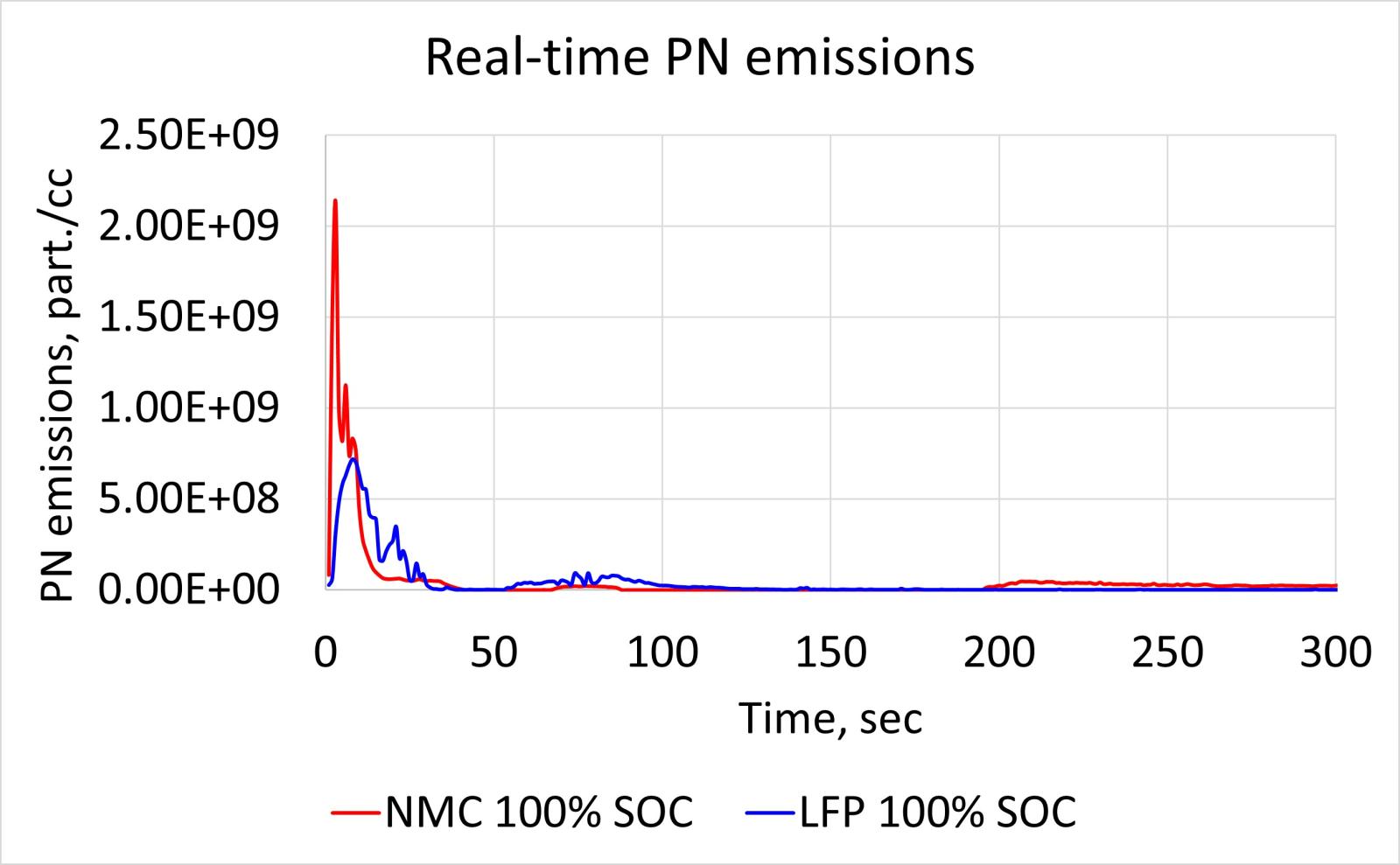
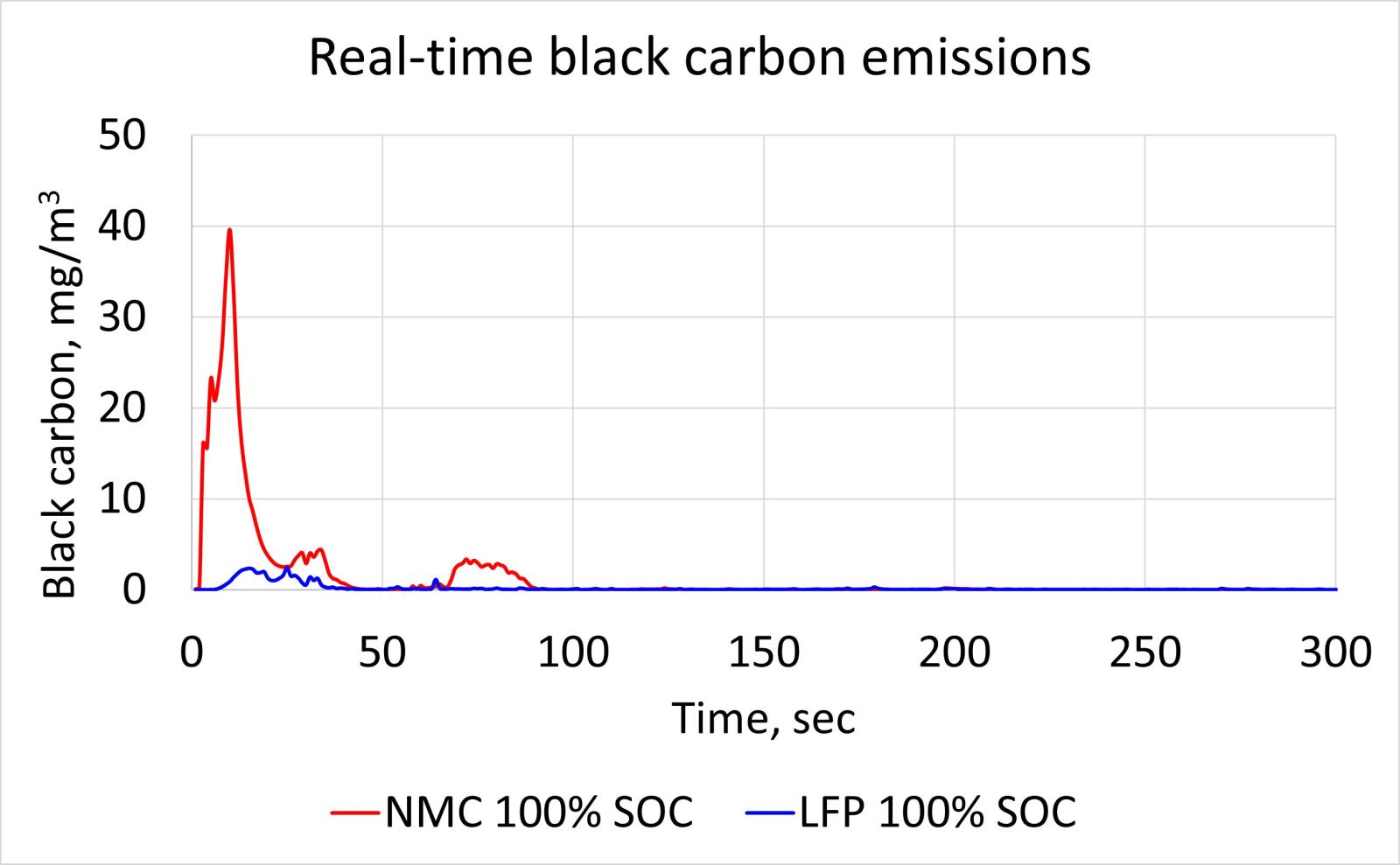
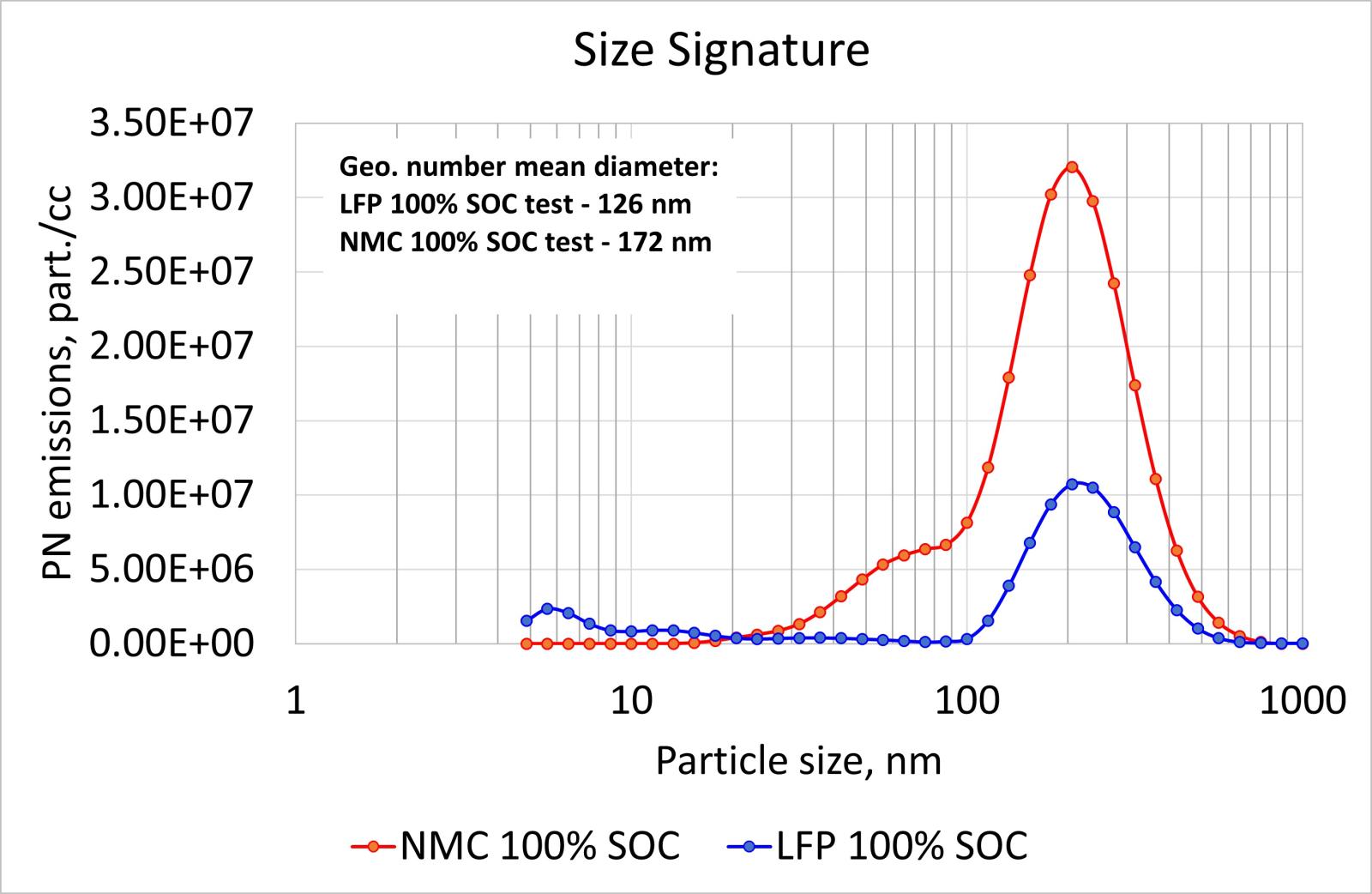
Revolutionizing Safety Through Science
At UL Research Institutes, we tackle tough issues with a scientific rigor trusted throughout the world.
PUBLISHED





